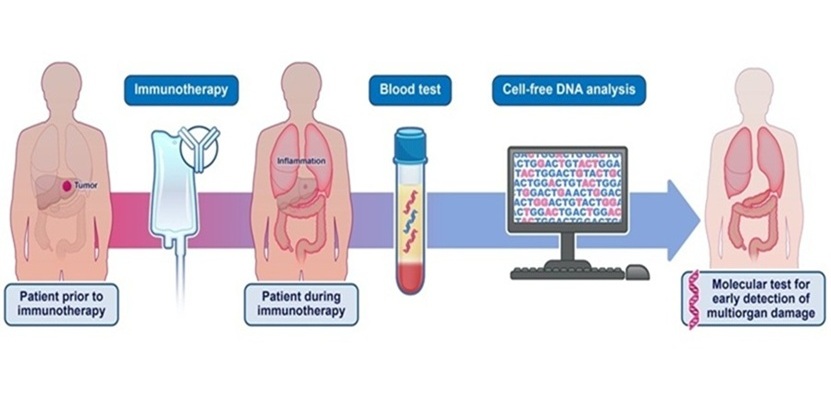Blood Test Can Effectively Rule Out Breast Cancer
By LabMedica International staff writers
Posted on 07 Nov 2017
Breast density is associated with reduced imaging resolution in the detection of breast cancer. Breast density is a radiologic phenomenon that is not discernable by palpation; it is a radiologist’s assessment. Imaging rays permeate dense breast tissue in a more opaque manner, thereby reducing image resolution.Posted on 07 Nov 2017
A biochemical approach that is not affected by density would provide an important tool to healthcare professionals who are managing women with dense breasts and suspicious imaging findings. A combinatorial proteomic biomarker assay (CPBA), when integrated with patient-specific clinical data to produce a diagnostic score can reliably detect breast cancer (BC) as an adjunctive tool to imaging.

Image: The Videssa Breast is the first blood test of its kind that detects and analyzes multiple types of tumor protein biomarkers for improved cancer detection (Photo courtesy of Provista Diagnostics).
Scientists working for Provista Diagnostics, Inc (New York, NY, USA) evaluated the performance of Provista’s Videssa Breast among 545 women, ages 25 to 50, with abnormal or difficult-to-interpret imaging (BI-RADS 3 and 4). Participants were enrolled at 13 clinical sites across the USA. All imaging modalities such as mammography, 3D tomography, ultrasound and MRI were permitted in the trial for the assessment of BI-RADS 3 or 4.
The team tested serum samples for Serum Protein Biomarkers (SPB), and Tumor Associated Autoantibodies (TAAb). Samples were analyzed for the relative presence or absence of TAAb by indirect enzyme-linked immunosorbent assay (ELISA) and all plates were read using a Meso Scale Discovery Sector S600 plate reader. The serum samples were tested with Videssa Breast. Briefly, SPB and TAAb data are combined with patient age into a logistic regression algorithm, the final output being a high protein signature (HPS) or low protein signature (LPS).
The scientists reported that for the Videssa Breast assay, the sensitivity and specificity in the dense breast group was 88.9% and 81.2% respectively, and 92.3% and 86.6% in the non-dense group. The differences were not statistically significant. The negative predictive value (NPV) was 99.1% in women who had dense breasts and 99.3% in women with non-dense tissue, providing confirmation that when a woman receives a negative test result, she does not have breast cancer.
Elayne Arterbery, MD, a radiation oncologist, who was a principal investigator on the Provista studies, said, “ This study also validates the scientific promise and the growing role biomarkers have in addressing diagnostic challenges for women with dense breasts, and the merits of further studies to help expand how we put that science to work to benefit women.” The study was published on October 25, 2017, in the journal Public Library of Science ONE.
Related Links:
Provista Diagnostics














